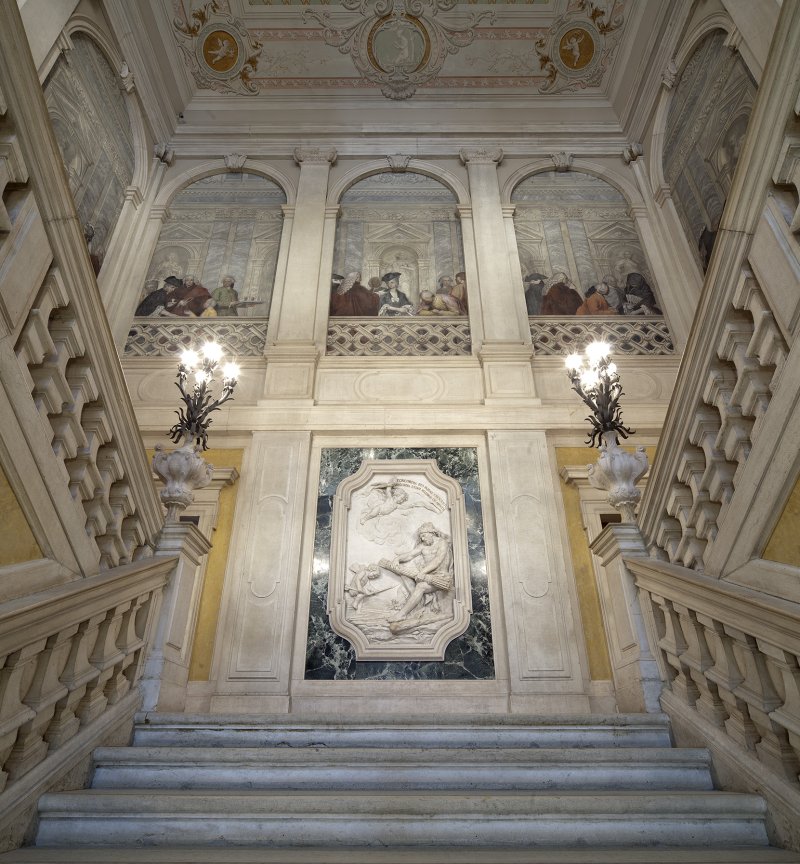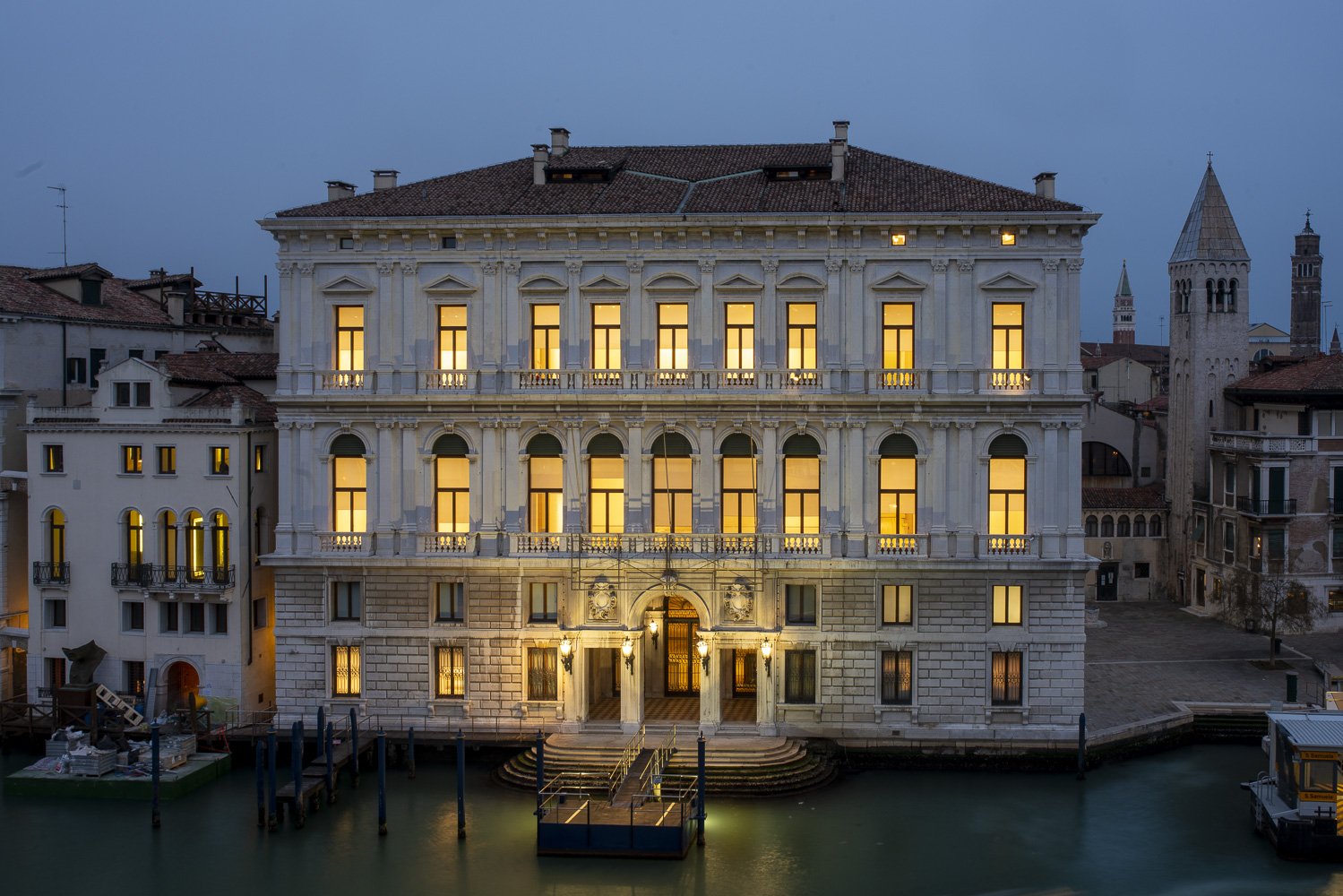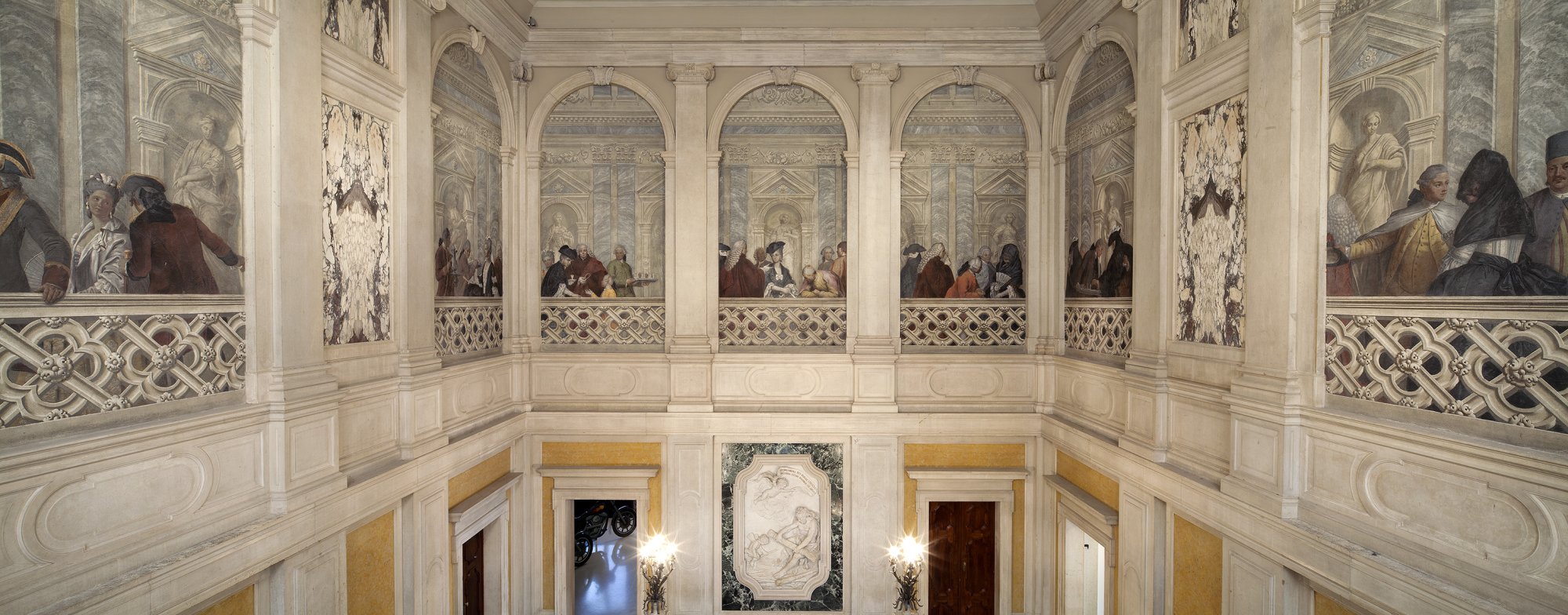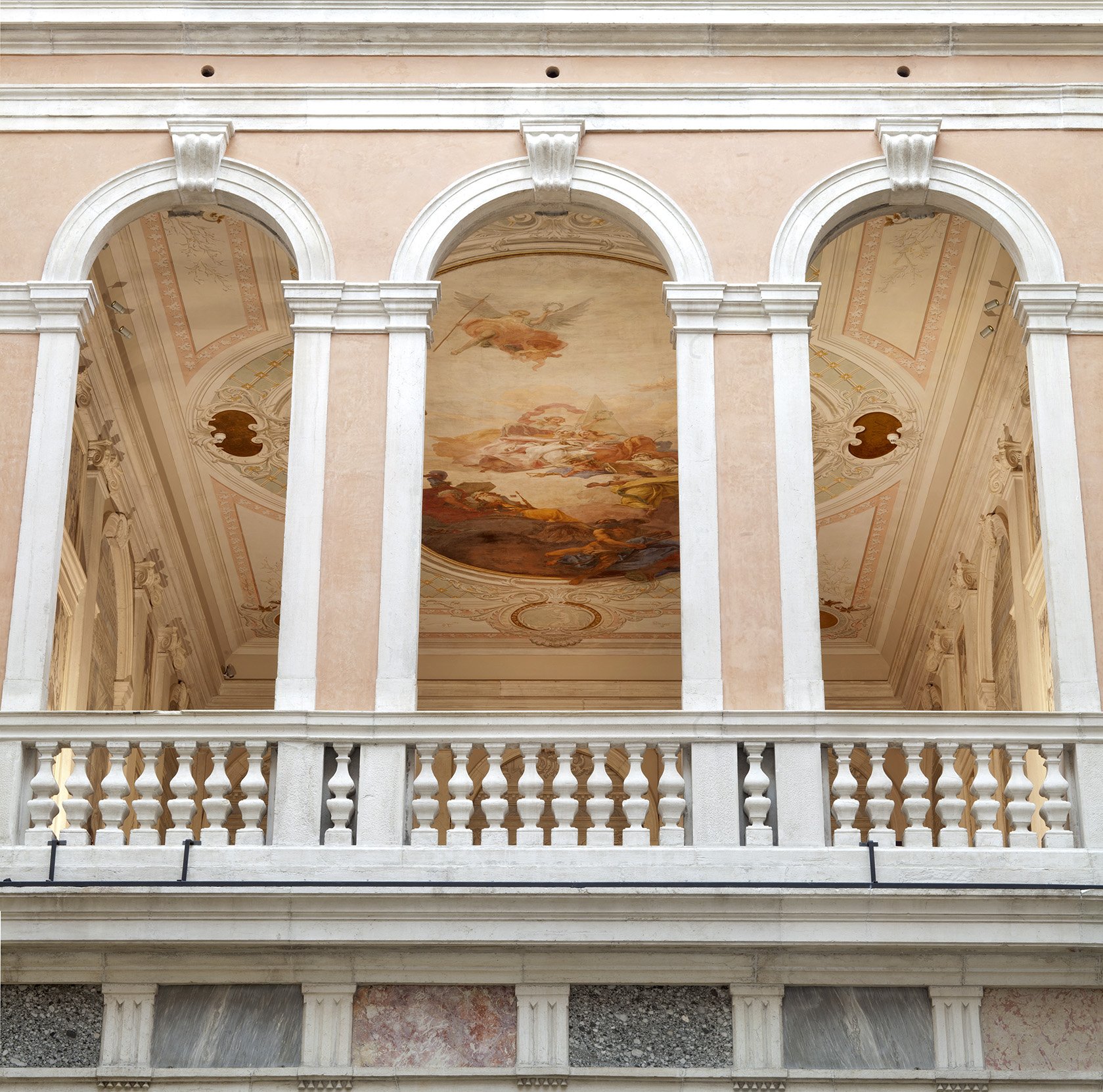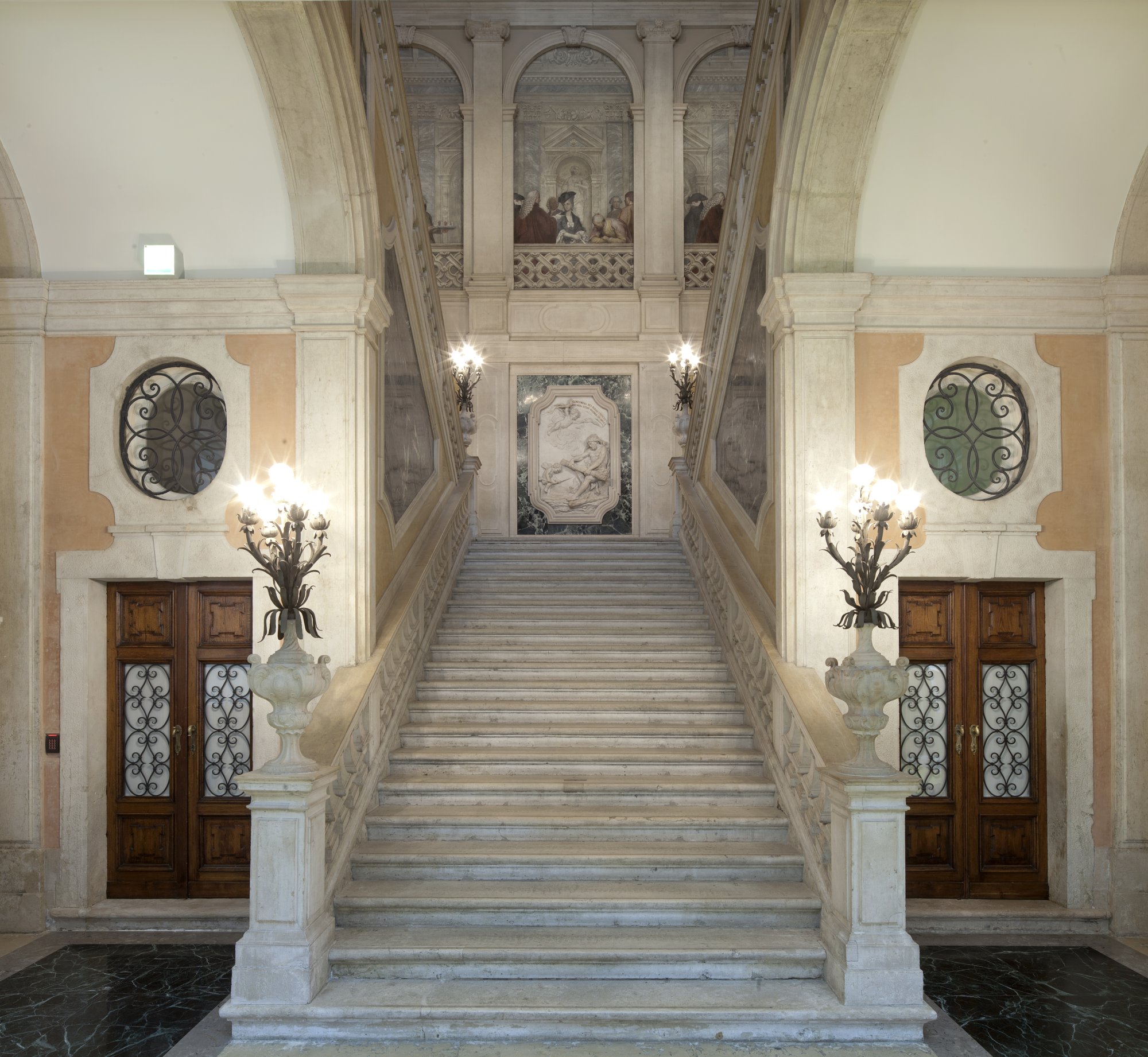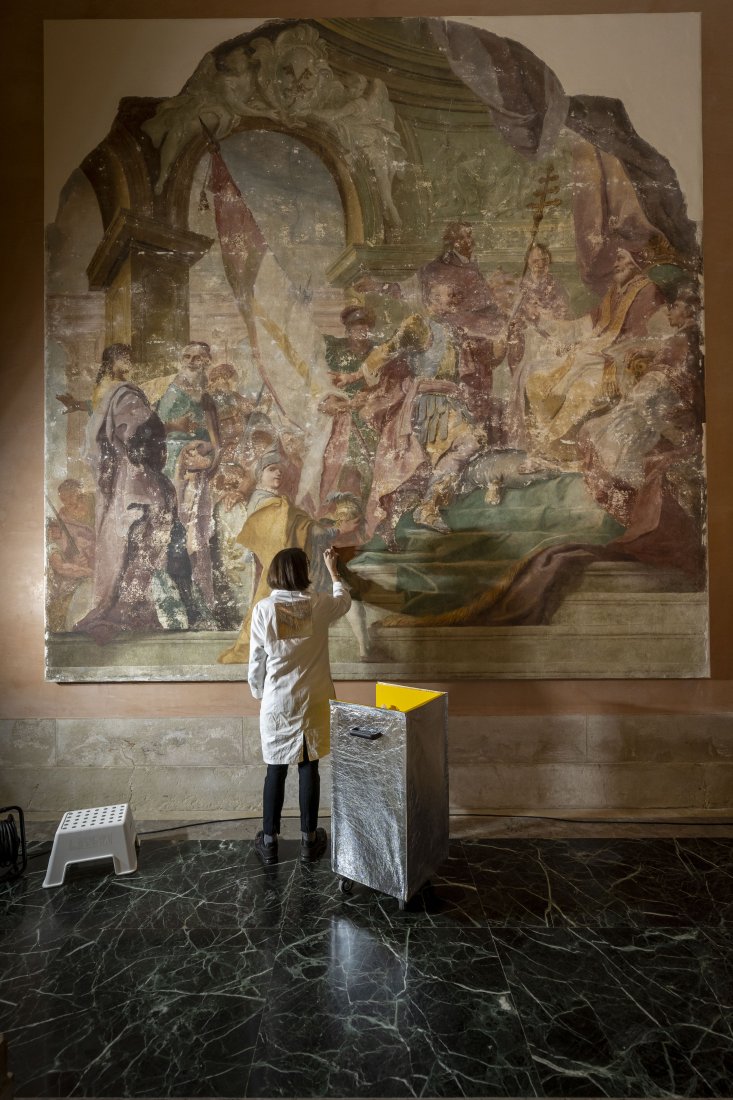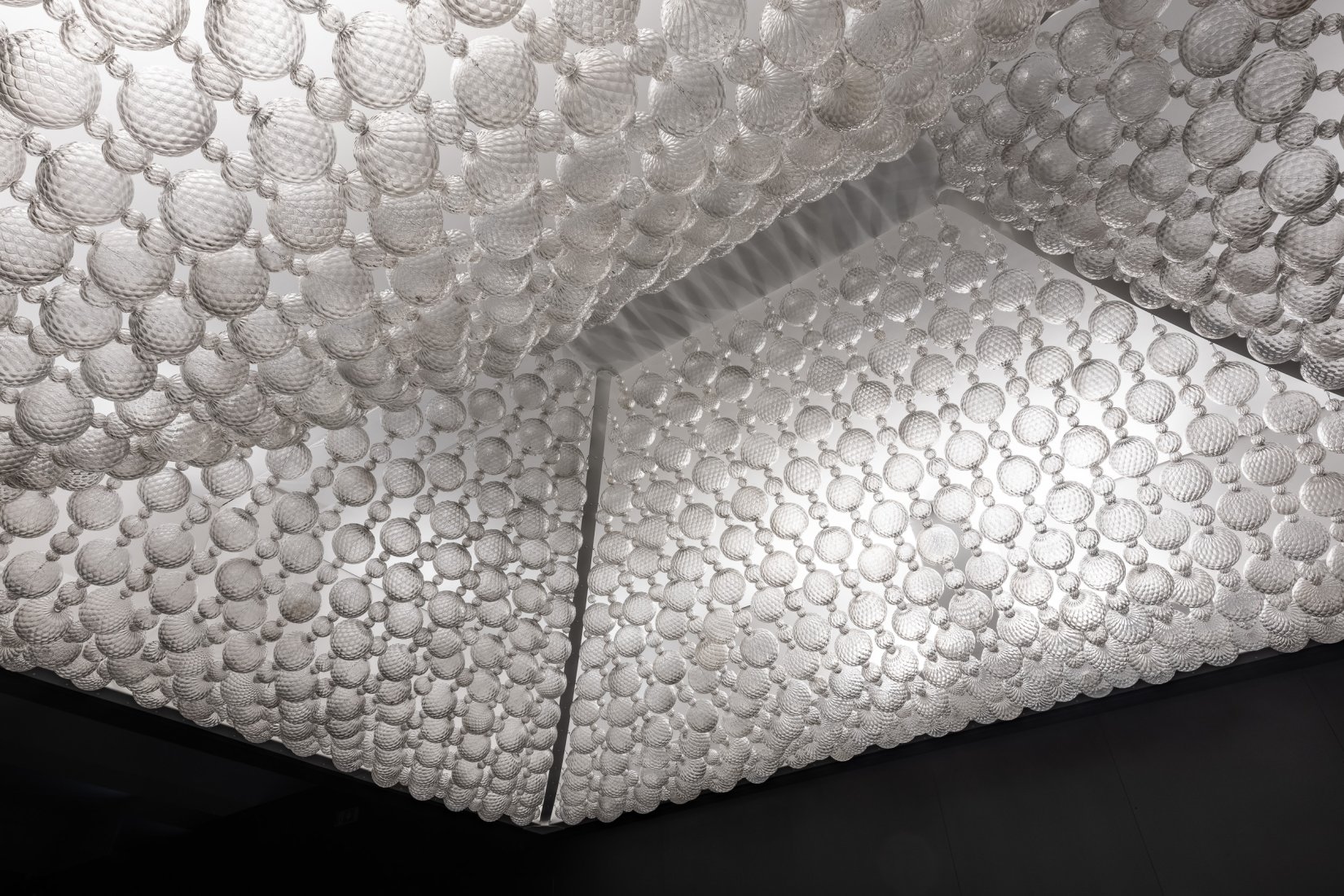Palazzo Grassi
The construction of Palazzo Grassi dates back to the period between 1748 and 1772, when the Grassi family commissioned Giorgio Massari to build what would be the last noble residence built on the Grand Canal before the fall of the Venetian Republic.
The construction of Palazzo Grassi dates back to the period between 1748 and 1772, when the Grassi family commissioned to Giorgio Massari what would become the last noble residence built on the Grand Canal before the fall of the Venetian Republic. Giorgio Massari was an architect capable of merging Palladian and Sansoviniane influences and had already participated in monumental construction sites such as Ca' Rezzonico and the facade of the current Academy of Fine Arts in Venice, but he had also built some refined aristocratic residences such as Villa Giovanelli Colonna in Noventa Padovana or Villa Cordellina Lombardi in Montecchio Maggiore.
Over the centuries, Palazzo Grassi had various owners - merchants, nobles and industrialists. Among the most influential: the baron Simeone de Sina, to whom we owe the nineteenth-century transformations of the building, the Marinotti family, who established the headquarters of the International Center of Arts and Costumes and made substantial architectural and decorative changes, and finally the management by Fiat, which led to a further change of structure through a reconversion project of the interiors signed by Gae Aulenti, a particularly expert designer in the construction sites of spaces for museum use, assisted by the Venetian architect Antonio Foscari. In 2005, Palazzo Grassi once more sees its spaces change and be reorganise: the intervention by Tadao Ando to open the first museum of the Pinault Collection complies with the limits imposed by the pre-existing architecture, but create a museum space that can be continuously updated and transformed, establishing a dialogue with the new exhibition programming of the collection.
From the Grand Canal, the facade of the Palazzo appears in line with the Venetian architectural tradition with its appearance marked in a sober and regular manner, while it continues with stylistic and chromatic variations on the side facing Campo San Samuele, where the access to the museum is. What was once a courtyard is now the imposing entrance hall, a space punctuated by a rigorous colonnade that rests on the inlaid marble floor dating from the 1950s, at the time of the establishment of the International Center of the Arts and Costumes. The roofing of the internal courtyard by means of a skylight and the setting up of the Murano glass velarium produced by Venini to filter the light coming from above also date back to this period, though the velarium has since been removes.
Questo ambiente, in cui sono collocati i due affreschi settecenteschi di Carlo Innocenzo Carloni recentemente restaurati, introduce allo spettacolare scalone d’onore che porta al percorso espositivo, le cui pareti sono decorate da affreschi di Michelangelo Morlaiter e Francesco Zanchi raffiguranti eleganti dame e cavalieri mascherati mentre si affacciano da un illusorio spazio balaustrato in architettura dipinta a trompe-l’œil. Al centro del soffitto troneggia una composizione allegorica, che in origine decorava quello che una volta era il salone da ballo a doppia altezza del palazzo, il quale rappresenta le allegorie della Giustizia incoronata dalla Gloria, opera del 1780 di Giambattista Canal. A partire dal primo piano, le sale espositive vere e proprie, si possono ammirare i fastosi soffitti ottocenteschi, commissionati dal barone De Sina, compreso l’affresco che decora la volta della sala di Nettuno e Anfitrite, ad opera dell’austriaco Christian Griepenkerl. Tadao Ando ha saputo coniugare l’eredità storica del palazzo con la sua nuova anima contemporanea, inaugurando la prima mostra della Pinault Collection, Where Are We Going?, nell’aprile 2006, dopo soli quattro mesi dall’inizio dei lavori di restauro.
This entrance hall, in which the two recently restored eighteenth-century frescoes by Carlo Innocenzo Carloni are located, includes the spectacular staircase, which leads to the exhibition rooms, with walls decorated with frescoes by Michelangelo Morlaiter and Francesco Zanchi depicting elegant masked ladies and knights as they look out from an illusory balustrade. The center of the ceiling is dominated by an allegorical composition, which originally decorated what was once the double-height ballroom of the palace, which represents the allegories of Justice crowned by Glory, a work from 1780 by Giambattista Canal. Starting from the first floor, the exhibition roomspresent sumptuous nineteenth-century ceilings, commissioned by Baron De Sina, including the fresco that decorates the vault of the Neptune and Amphitrite room, by the Austrian Christian Griepenkerl. Tadao Ando was able to combine the historical legacy of the building with its new contemporary soul, inaugurating the first exhibition of the Pinault Collection, 'Where Are We Going?', in April 2006, only four months after the start of the restoration works.
Discover Palazzo Grassi
